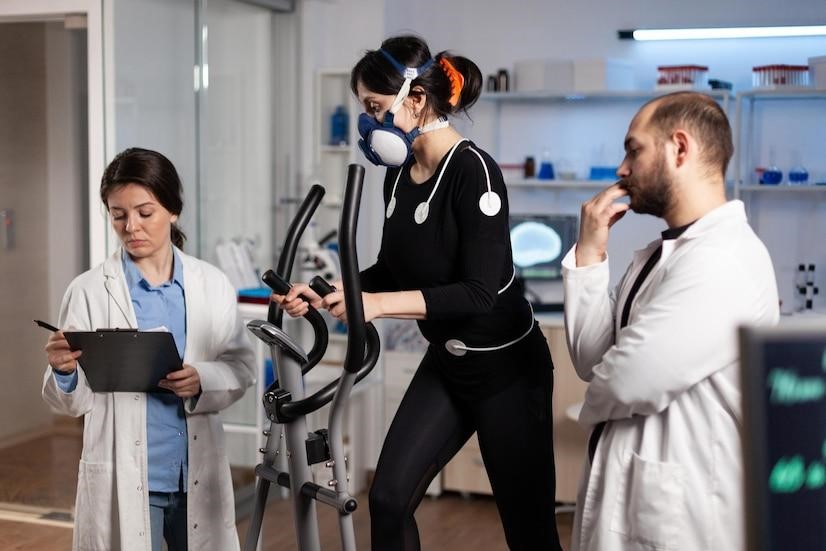
Evolution Of Orthopedic Surgery Techniques And Technologies
Orthopedic surgery has advanced significantly, from traditional open techniques to minimally invasive methods like arthroscopy and small-incision joint replacements. These innovations, driven by improved imaging and surgical instruments, reduce patient trauma, speed recovery, and lower complications.
Robotics and artificial intelligence (AI) further revolutionize the field. Robotic-assisted surgery offers precision and control, optimizing implant placement and minimizing errors. AI aids decision-making by analyzing data and identifying patterns, leading to more personalized treatments.
These technological advancements promise a future of even more effective and efficient orthopedic procedures.
Advancements In Minimally Invasive Orthopedic Surgery
Minimally invasive orthopedic surgery specialists have revolutionized the field by offering significant benefits such as reduced tissue trauma, quicker recovery, less pain, and minimal scarring. These techniques utilize smaller incisions and specialized instruments, which not only decrease complications but also accelerate rehabilitation.
Advancements in imaging technologies, such as high-resolution cameras and real-time imaging guidance, enhance surgical precision and decision-making. Robotics and computer-assisted technologies improve accuracy, optimize implant placement, and reduce risks.
Ongoing research and technological advancements elevate patient experiences and clinical outcomes, promising a bright future for minimally invasive orthopedic surgery.
Robotics And Artificial Intelligence In Orthopedic Surgery
Integrating robotics and artificial intelligence (AI) in orthopedic surgery has revolutionized precision, efficiency, and personalized care. Robotic-assisted surgery enhances mastery and control, allowing for highly accurate procedures with fewer complications and faster recovery.
AI provides personalized treatment by analyzing patient data for tailored recommendations and real-time surgical guidance. This leads to more informed decisions and optimized treatment strategies.
The combination of robotics and AI improves patient safety, reduces recovery times, and enhances long-term outcomes, ultimately raising the standard of care in orthopedic surgery.
3d Printing In Orthopedics: Customized Implants And Prosthetics
3D printing has revolutionized orthopedics by enabling customized implants and prosthetics. Surgeons can create patient-specific implants using CT scans and MRI data from Tellica Imaging, ensuring a precise fit and better surgical outcomes. Innovative biomaterials such as titanium alloys and polymers integrate well with natural bone, promoting faster healing and reducing complications. 3D printing also allows for the creation of complex biomimetic structures.
Additionally, patient-specific surgical guides improve surgical accuracy and reduce operation time. As 3D printing continues to evolve, it promises even more personalized and innovative orthopedic solutions.
Stem Cell Therapy In Orthopedics: Regenerative Medicine For Joint And Tissue Repair
Stem cell therapy has emerged as a promising frontier in orthopedic regenerative medicine, offering new hope for restoring joint function and tissue integrity. Stem cells, sourced from bone marrow or adipose tissue, possess the unique ability to differentiate into specialized cells, aiding in the repair of damaged tissues.
In orthopedics, stem cell therapy is particularly effective for treating joint-related disorders like osteoarthritis and cartilage injuries. Injected directly into affected joints, stem cells can regenerate cartilage and alleviate pain, potentially delaying invasive surgeries such as joint replacements.
Beyond joint repair, stem cell therapy is promising for treating tendons, ligaments, bone fractures, and spinal cord injuries. By promoting tissue regeneration, these treatments aim to improve functional outcomes and expedite recovery.
As research and clinical trials progress, stem cell therapy’s safety, effectiveness, and long-term benefits in orthopedics are being rigorously evaluated. This ongoing exploration suggests a future where stem cell therapies could be more integral in orthopedic care.
Virtual Reality And Augmented Reality In Orthopedic Surgery Training
Virtual reality (VR) and augmented reality (AR) are revolutionizing orthopedic surgery training, addressing the need for precise skills development in increasingly complex procedures.
VR creates immersive, three-dimensional environments where trainee surgeons can practice procedures without patient risk. These simulations refine hand-eye coordination and technique mastery, crucial for safe surgical practices.
VR training systems provide real-time feedback, aiding trainees in identifying and improving skills. Practice of rare or high-risk procedures enhances surgeon competency and confidence, leading to better patient outcomes.
In contrast, AR overlays digital information onto the surgeon’s view, enhancing intraoperative guidance. Real-time imaging data displayed during surgery aids in precise decision-making, optimizing surgical planning and implant placement.
As VR and AR adoption grows in orthopedics, the potential for enhanced training and surgical outcomes is clear. These technologies empower surgeons to refine skills efficiently, reduce learning curves, and deliver superior patient care.
Telemedicine In Orthopedics: Remote Consultations And Post-Operative Care
Telemedicine has transformed orthopedic care by enabling remote consultations and post-operative follow-ups via videoconferencing, digital imaging, and secure platforms. This approach enhances access to specialized services, eliminates the need for in-person visits, and reduces patients’ travel burdens.
Remote consultations facilitate prompt assessment, treatment planning, and intervention initiation, improving efficiency and patient outcomes. Wearable devices and remote monitoring systems enhance post-operative care, allowing for continuous recovery monitoring and timely adjustments to optimize functional outcomes.
Integrating telemedicine with augmented reality and artificial intelligence offers personalized guidance and treatment optimization in orthopedic care.
Despite data security and regulatory complexities, telemedicine’s benefits in expanding access, reducing costs, and enhancing patient satisfaction underscore its transformative impact on orthopedic surgery.
Challenges And Ethical Considerations In The Future Of Orthopedic Surgery
As orthopedic surgery advances with cutting-edge technologies, addressing ethical challenges is crucial. Ensuring equitable access is critical, as these innovations should benefit all, despite socioeconomic or geographic differences. Telemedicine and personalized, 3D-printed implants can help bridge gaps, yet healthcare systems must tackle financial and logistical barriers hindering widespread adoption.
Maintaining the patient-physician relationship amidst technological integration is another ethical concern. Balancing benefits like robotics and AI with the personal, empathetic connection is vital to avoid dehumanizing healthcare experiences. Surgeons must prioritize the human element alongside these advancements.
Data privacy and security are also critical as orthopedic care digitalizes. Safeguarding vast patient data from telemedicine, digital imaging, and remote monitoring systems is essential to protect confidentiality.